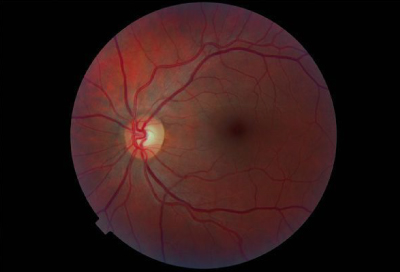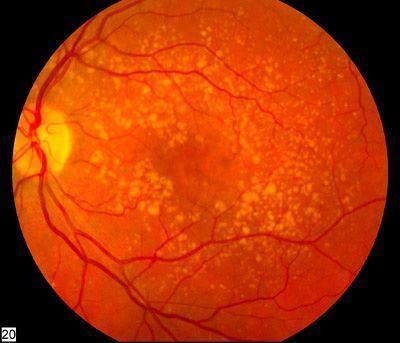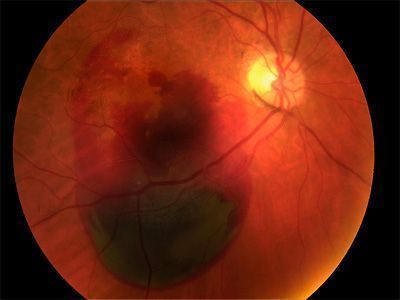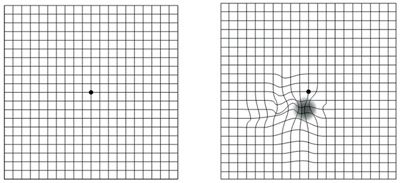AGE-RELATED MACULAR DEGENERATION
Main cause of blindness
ARMD is a degenerative disease of the retina that mainly affects the macula, the centre of vision, and is the main cause of blindness in patients over 55 years of age.
Genetic Predisposition and Environmental Influence
ARMD is a Genetic Disease (Hereditary) influenced by the environment (Tobacco, Food, Sun Exposure, Pollution, Cardiovascular Diseases …).

- Genetics: It is a hereditary disease with a very high frequency, affecting up to 22% of Caucasians, being less prevalent in pigmented races.In the USA, it is estimated that of its population of 324 million, 11 million patients suffer from blindness due to ARMD.
- Tobacco: It is a powerful pro-oxidant and has a very negative influence on the progression of the disease.
- Light Exposure: A greater exposure to light, natural and artificial, is associated with an increased risk of progression of ARMD. It is always advisable to reduce your exposure with sunglasses. In Intermediate and Advanced cases, it may be advisable to use filters for visible and invisible blue light.
- Diet: A diet rich in antioxidants helps to protect against the progression of the disease. Conversely, a poor diet will pose a greater risk of disease progression.
Dry ARMD (Atrophic): Drusen (yellowish deposits under the retina) accumulates and progressive atrophy of the retina occurs. It is usually asymptomatic and predisposes to acute bleeding and central atrophy of the retina. It requires periodic controls and intake of antioxidants is recommended, a balanced diet, reduction of light exposure (in some cases with filters for blue light) and stopping smoking.

Normal retina

Retina with dry ARMD
Wet ARMD: Proliferation of new blood vessels that destroy central vision. The natural evolution of the disease is towards central blindness. The treatment can prevent the loss of vision, so it is essential to perform an early diagnosis to avoid blindness.

Retina with wet ARMD
Symptoms of Macular Degeneration
- Blurred vision: Decreased central vision (distance vision and reading ability are reduced).
- Distorted vision: Straight lines are perceived as undulated.

Early diagnosis
Periodic visits to the Ophthalmologist: Due to the high prevalence of Macular Degeneration, it is advisable to make periodic controls even when there are no symptoms. The recommended periodicity of the controls will be determined by the severity of the disease (according to the stage of Macular Degeneration: Initial, Intermediate or Advanced), varying from 6 months to even days.
Self-evaluation is essential: With the help of various tools, the patient should periodically observe the quality and quantity of his vision, and visit the ophthalmologist if necessary

Amsler grid, recommended for the self-assessment of alterations in central and paracentral vision, affected in Macula Diseases.
Diagnostic Tests: OUR TECHNOLOGY
In PRESBIT, we have the most advanced technology for the Early Diagnosis and Treatment of the different Forms of Age-related Macular Degeneration (ARMD).
OCT (Optical Coherence Tomography), Fundus Autofluorescence, Colour Retinography, Fluorescein Angiography, Microperimetry, Multifocal Electroretinogram (ERGm) and Ocular Ultrasound will allow the correct diagnosis, monitoring and follow-up of the different stages of the disease.
ARMD Treatment
Intravitreal Antiangiogenic Therapy (Anti-VEGF) is the treatment of choice for wet ARMD, and consists of a serial of injections of intraocular medication that inactivate new vascularization.
Laser treatment: Isolated or associated with the use of intravenous medication with activity on the new vascularization such as Verteprofin, it is sometimes used to improve the control of the disease.
Surgery: In some cases, it may be necessary to perform intraocular surgery for the treatment of massive haemorrhages or other retinal problems.
Our Retina Expert Dr Luis Amselem Gómez:
“The Diagnosis and Early Treatment in ARMD is very important. Identifying patients at risk and establishing a prevention and monitoring guideline helps prevent blindness caused by the disease.”
Let’s be decisive with ARMD, it is now something we can fight.


